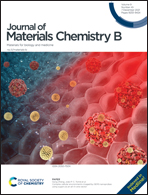Biological protein mediated ferroptotic tumor nanotherapeutics
Abstract
Ferroptosis, a cell death pathway involving iron-related generation of lipid hydroperoxides for achieving incredible tumor suppression, has reignited the hope of chemotherapy in tumor treatment in the past decade. With extensive research studies, various bioactive proteins and cellular pathways have been demonstrated to regulate the occurrence and development of ferroptosis. The gradually established ferroptotic regulatory network is conducive to find effective proteins from a holistic perspective and guides better designs for future ferroptotic tumor therapies. The first section of this review summarizes the recent advances in ferroptotic regulatory mechanisms of proteins and attempts to clarify their latent function in the ferroptotic regulatory network. Second, the existing protein-mediated ferroptotic tumor nanotherapeutic strategies were reviewed, including the protein-mediated iron supplement, cell membrane transporter inhibition, glutathione peroxidase 4 interference, glutathione depletion, bioenzyme-mediated reactive oxygen species generation, heat shock protein inhibition, and tumor-overexpressed protein-triggered drug release for ferroptotic therapy. Finally, the future expectations and challenges of ferroptotic tumor nanotherapeutics for clinical cancer therapy are highlighted.

- This article is part of the themed collection: Journal of Materials Chemistry B Recent Review Articles


 Please wait while we load your content...
Please wait while we load your content...